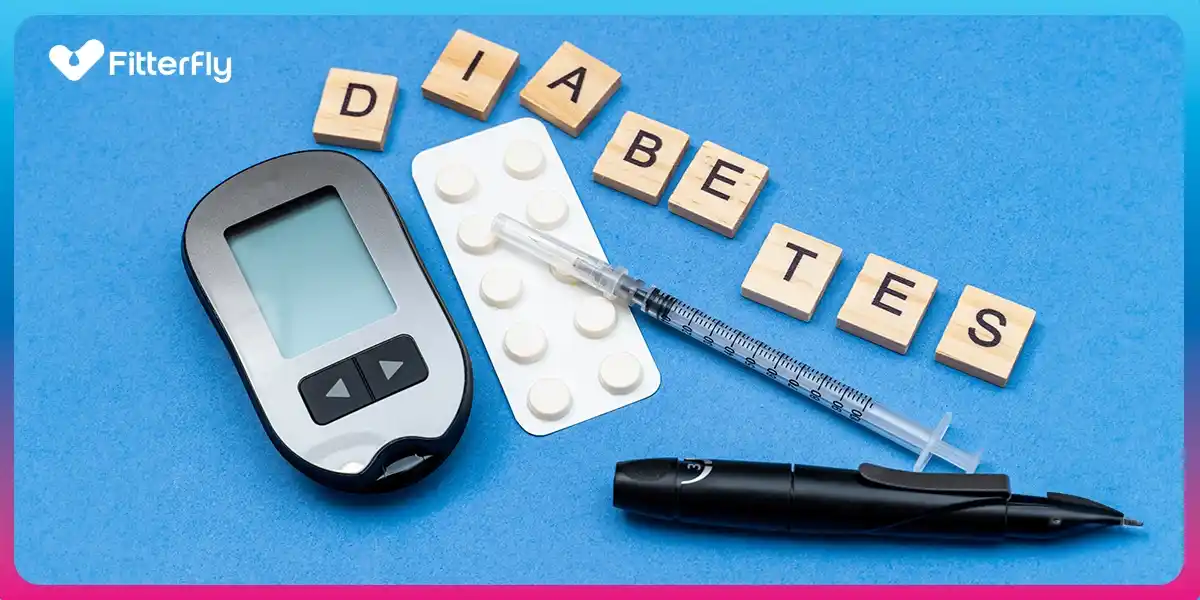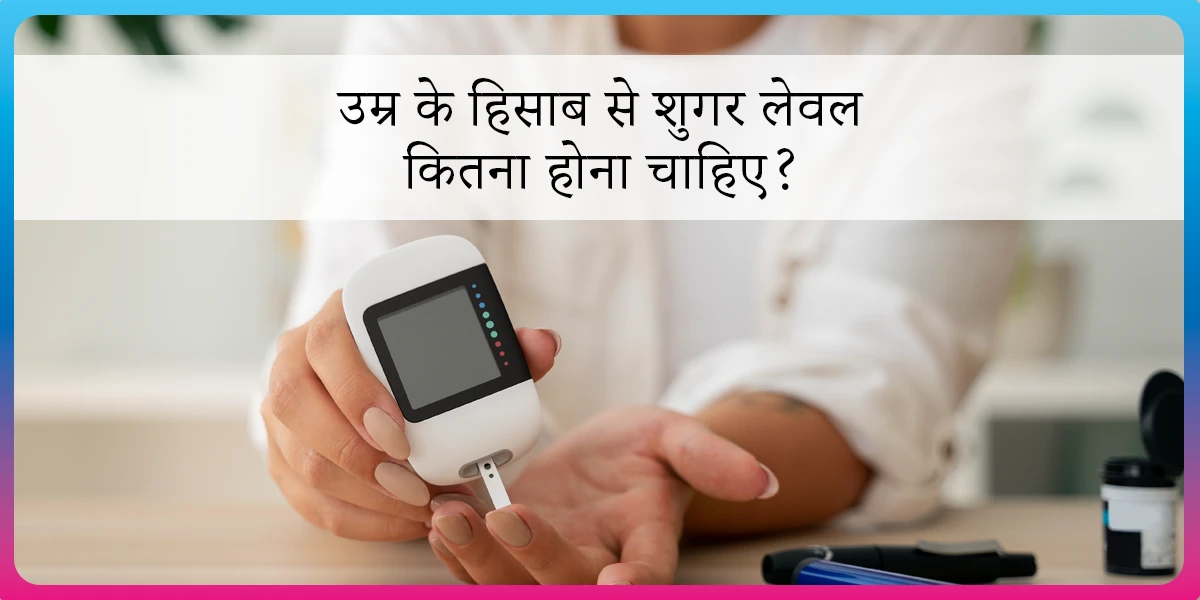Diabetes Complication: Risks, Symptoms, and Solutions

When I was 28, I was diagnosed with Type 2 diabetes. It was a real eye-opener, especially with the tingling in my fingers and heel pain. It showed me how uncontrolled diabetes can affect almost every body part.
As most people in India are unaware of the complications of diabetes, it’s really important to understand three things:
- What are these complications?
- How to identify and differentiate these complications?
- How to manage or avoid serious problems arising from these complications?
Now, let’s quickly understand what diabetes is.
What is Diabetes?
Diabetes is a condition where your body either doesn’t make enough insulin or can’t use it well. Insulin helps manage blood sugar.
Diabetes is mainly of two types:
1. Type 1 Diabetes: Your body doesn’t make insulin.
2. Type 2 Diabetes: Your body doesn’t use insulin well.
Who Can Develop Complications?
Anyone with diabetes can develop diabetes-related complications, but the risk increases for those who are:
- Not able to manage their blood sugar levels
- Have a long history of diabetes
- Possess other underlying health conditions such as high blood pressure or high cholesterol.
- Someone who is not able to make lifestyle modifications like improving diet, actively exercising, reducing stress, improving sleep, quitting smoking, etc.
But no need to start worrying, my friend! You can find out if you have any complications due to diabetes – just keep an eye out for these signs & symptoms that your body gives:
What Are the 10 Warning Signs & Symptoms of Diabetes Complications?
1. Heart Problems
Chest pain, shortness of breath, and increased heart rate.
2. Kidney Problems
Swelling in feet and ankles, fatigue, and frequent urination.
3. Eye Problems
Blurred vision, and impaired colour recognition.
4. Nerve Damage
Tingling, numbness, burning, or pain, primarily in the hands and feet.
5. Peripheral Arterial Disease
Leg pain when walking, coldness in the the lower foot or leg, and sores.
6. Foot Problems
Ulcers, infections, and persistent foot sores.
7. Sexual Problems in Men & Women
Includes erectile dysfunction in men and decreased sexual drive in both men and women.
8. Hypoglycemia (Low Blood Sugar)
Sweating, hunger, dizziness, and mood changes.
9. Diabetic Ketoacidosis
Nausea, vomiting, abdominal pain, rapid breathing, and fruity-scented breath.
10. Hyperosmolar Hyperglycemic State (HHS)
Symptoms include extreme thirst, fever, confusion, and vision loss.

Understanding these symptoms becomes super important for you, so that you can intervene timely and prevent further health decline.
What are the Risk Factors of Complications Due to Diabetes?
- Family history
- Compromised immune system
- Age and weight
- Polycystic Ovary Syndrome
- High blood pressure
- High cholesterol
So, you know how to recognise those worrisome signs/symptoms and risk factors associated with diabetes complications that you often miss out on.
Let’s see how to prevent complications of diabetes smartly.
To know your chances of Diabetes reversal, take the Diabetes Reversal TestDiabetes Reversal
Calculator
How Can You Prevent Diabetes Complications?
- You should aim to lose 5-7% of your body weight which can help you control your blood sugar levels.
- Making changes in your diet like eating balanced meals with vegetables, proteins, and keeping carbs at 45-50 grams per meal.
- Doing regular physical activity like jogging or intense walking, exercise or yoga or playing any outdoor games, can help you to lower blood sugar and improve your overall health.
- Managing your stress and ensuring adequate sleep which helps you to manage your mental health. Also, seek for mental health support if needed.
- You should take medications as prescribed and follow your doctor’s advice.
- Always, have regular medical check-ups and HbA1c tests to monitor your condition.
How We Can Help You?
We understand the stress that diabetes can cause, let alone the complications arising from it. That’s why we at Fitterfly are here to help you at every step in understanding your condition and dealing with any complications that may arise from diabetes.
Give us a call on 08068507599 and talk to one of our experts to see how we can help you or check out Fitterfly’s Diabetes Prime Program.
This blog provides general information for educational and informational purposes only and shouldn't be seen as professional advice.
Frequently Asked Questions
What Are 10 Warning Signs of Diabetes?
Frequent urination, excessive thirst, unexplained weight loss, increased hunger, fatigue, blurry vision, slow-healing sores, frequent infections, tingling or numbness, and dark skin patches.
What Can Cause Diabetes?
A combination of genetic and environmental factors, including obesity, lack of exercise, and poor diet.
What Are the Symptoms of High and Low Blood Sugar?
High blood sugar symptoms include increased thirst and urination, fatigue, and blurry vision. Low blood sugar symptoms include shakiness, sweating, hunger, and dizziness.
What Is the Most Common Complications of Diabetes?
Cardiovascular disease is the most common and serious complication, highlighting the importance of managing blood sugar levels to prevent heart-related issues.
What are the ways to prevent complications of diabetes mellitus?
Managing your blood sugar levels, blood pressure, and cholesterol, along with regular medical checkups, can help prevent or delay complications of diabetes. Lifestyle changes such as healthy eating, regular physical activity, and avoiding alcohol/smoking are also important.
Fitterfly's Diabetes Prime Program
clinical term for Diabetes Reversal
























